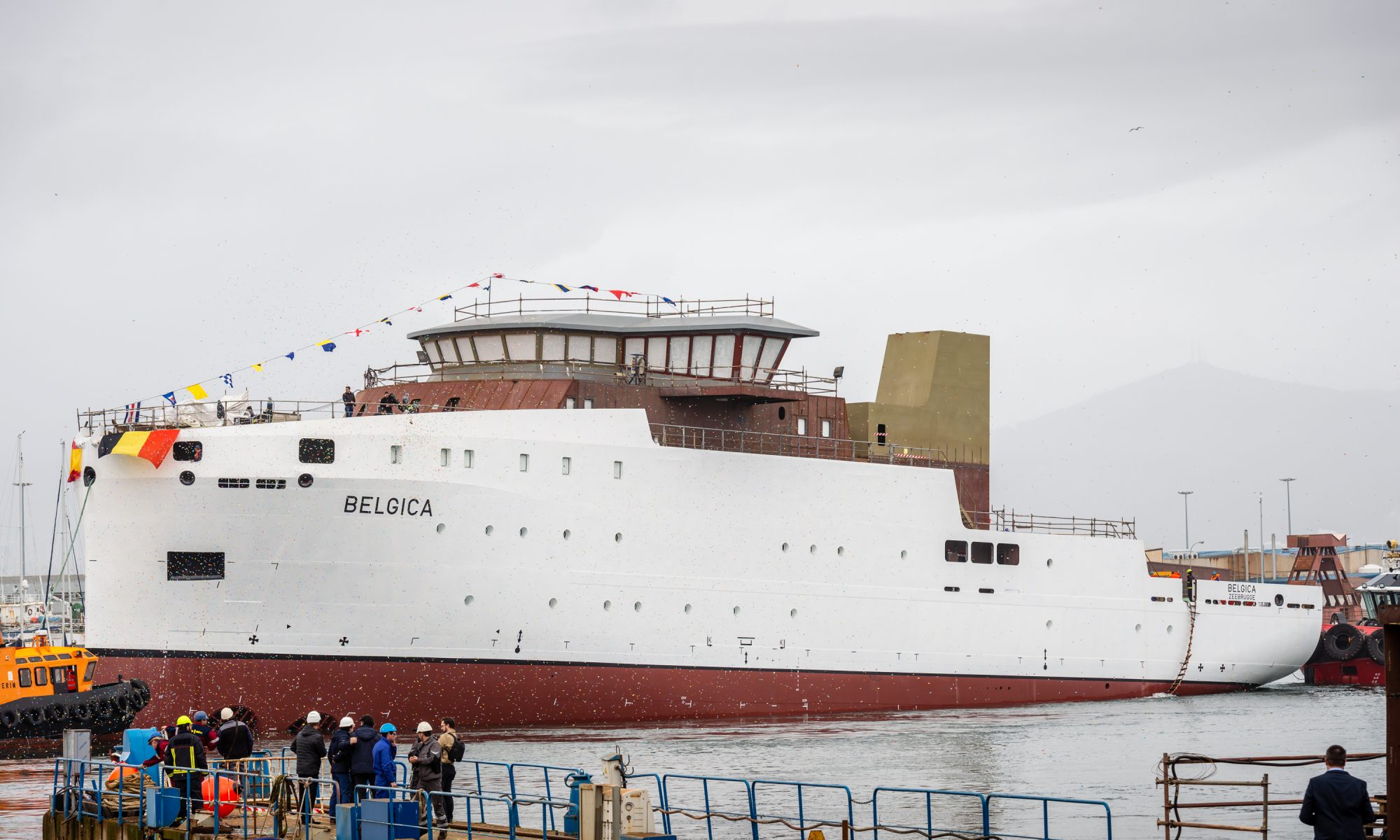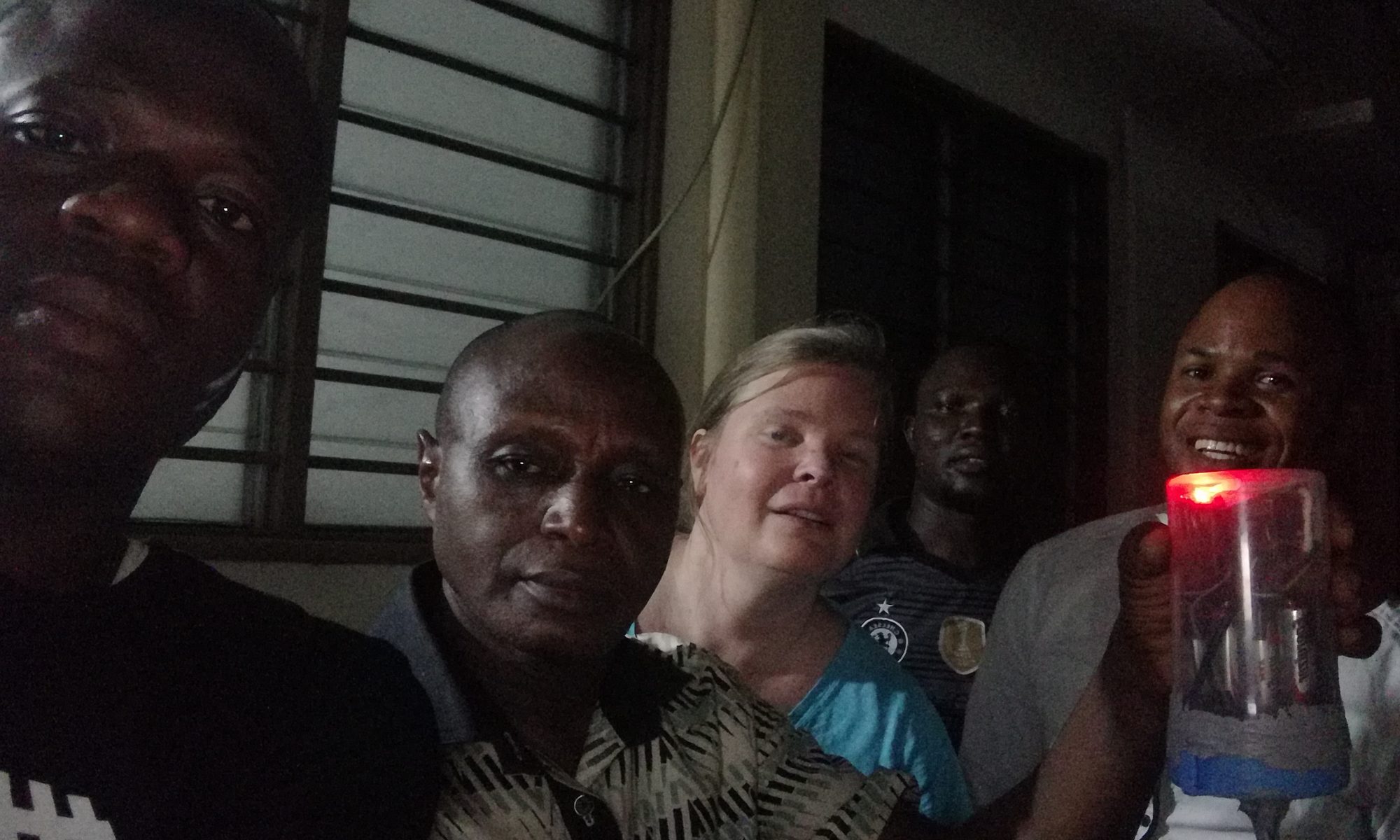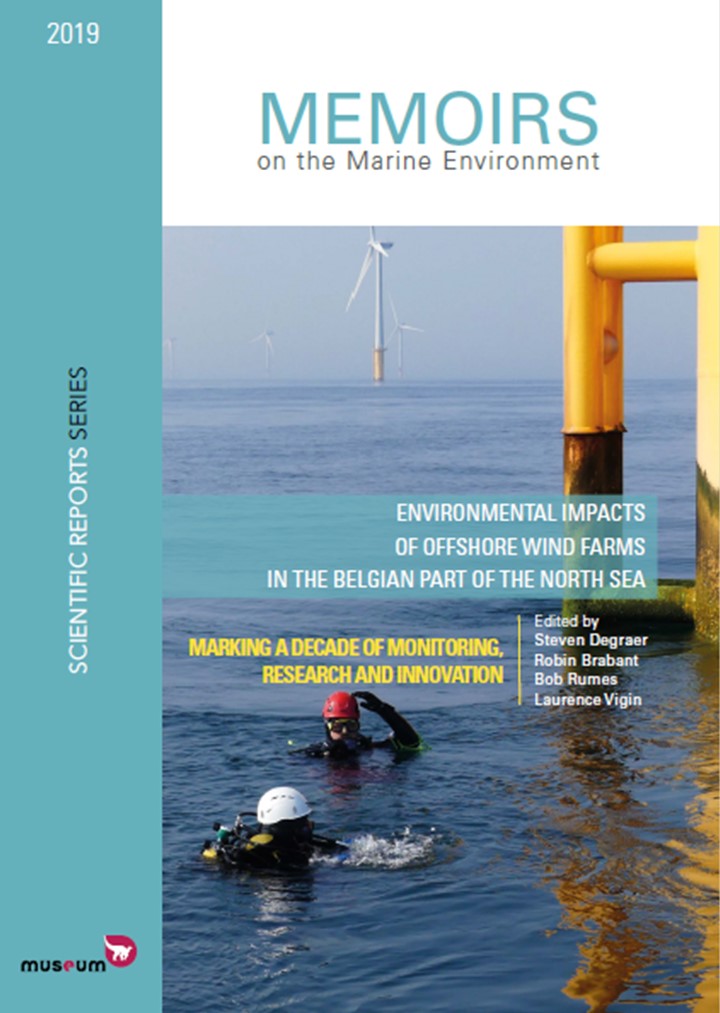The future Belgian research vessel Belgica was launched for the first time on 11 February 2020 from the Freire Shipyard in Vigo, Spain. An important milestone following the keel laying, the equivalent of the laying of the foundation stone of a building, just under a year ago. The ceremony took place in the presence of the various project partners: the shipyard, the Federal Science Policy Office (BELSPO), Defence and the Royal Belgian Institute of Natural Sciences (RBINS). Now the ship will be further finished and provided with all the necessary equipment. The delivery of the ship in Zeebrugge is scheduled for the last quarter of this year. Then it will officially be put into service. The cost of the project amounts to approximately 54 million euros (VAT included).

The first launch of a new ship (where the ship is literally transferred from land to water for the first time) is always considered a joyful event, which is celebrated with a formal ceremony. This includes speeches by the various project partners on the Spanish and Belgian sides, the actual launch, the signing of the book of honour and the exchange of gifts.
After a welcome speech by Mr Guillermo Freire, General Manager of Freire Shipyard, the representatives of the Belgian delegation were the first to address those present. Mr Pierre Bruyere, Chairman of the Executive Committee of BELSPO, outlined the path that led to the current collaboration and contract with Freire Shipyard, and stressed that in 2020 we will also be celebrating 50 years of continued funding of marine sciences through BELSPO’s research programmes. The arrival of the new RV Belgica will be a highlight of this celebration. Mrs Patricia Supply, General Director of RBINS, emphasized among other things the long history of marine scientific research at this institute. Many milestones were covered: from the first Belgian Antarctic expedition (1897-1899) led by Adrien de Gerlache, through the first standardised sampling of Belgian marine fauna (1898-1939) by Gustave Gilson, to the accommodation of the MUMM scientific service (Management Unit of the Mathematical Model of the North Sea) within RBINS in 1997. Division-Admiral Yves Dupont, head of the Systems Division of the General Directorate of Material Resources of Defence, then praised the way in which the close cooperation of the past years within the framework of the current RV Belgica led to an increasing knowledge of the sea, which also contributes to the success of the activities of the Navy. The knowledge that the new RV Belgica will acquire, and the continued exchange of scientific and military information, will also remain indispensable in this context.
Finally, the Belgian representatives congratulated Freire Shipyard not only on the successful way in which they are implementing the new RV Belgica project, but also on the 125th anniversary of the shipyard, which will also be celebrated in 2020.

Background and Milestones of the Construction and Naming Process
After 36 years of service, with more than 1,000 scientific expeditions and more than 900,000 kilometres travelled on the counter (>22.5 times around the earth), the current Belgian oceanographic research vessel A962 Belgica (built in 1984) was in need of replacement. Therefore, on 28 October 2016, the federal government decided to build a new modern research vessel. The contract for the design and construction of the ship was awarded by the Minister of Science Policy to the Spanish shipyard Freire Shipyard (Vigo) and the Norwegian ship designer Rolls-Royce Marine AS (which in the meantime became part of the Norwegian Kongsberg Maritime).
The Directorate General Material Resources (DG MR) at the Ministry of Defence has a solid knowledge of tendering procedures. The latest acquisition of two new patrol vessels and the renewal of the mine countermeasure capacity, among other things, fitted nicely with the acquisition of this new research vessel. It therefore went without saying that the Ministry of Defence and the Ministry of Science continued to work closely together on the acquisition and monitoring of the design and construction process. Since the contract was awarded, a great deal has been achieved: the detailed plans for the vessel were drawn up, scale models were tested, and on 13 February 2019 the cutting of the steel for the construction of the new vessel was started. The keel laying took place on 27 March 2019. Less than a year later, the new RV Belgica can be launched for the first time! Afterwards, the ship will be further finished and provided with all the necessary equipment. At the end of 2020, as planned, it will be delivered in its home port of Zeebrugge to support the marine research community for the next thirty years. After 36 years of loyal service, the current RV Belgica will then end its research activities for good.
In the meantime, the name of the Belgian oceanographic ship was also determined. After a naming competition with several phases (submission of proposals by secondary schools, first selection of admissible names by a professional jury, followed by a public online vote) it became clear that the new ship will honour the Belgian tradition and will also go through life as RV Belgica. The Federal Minister for Science Policy announced this on 25 April 2019 in the presence of the winning class 1LA of Athénée Maurice Destenay in Liège, after which students and minister could enjoy a sea voyage on the current A 962 Belgica.

Future of the New RV Belgica
Compared to its predecessor, the new RV Belgica is larger (71.4 m compared to 50 m) and offers more space to the scientists (a doubling of laboratory space with a capacity to take up to 28 scientists on board). The new RV Belgica will guarantee compliance with our country’s national and international obligations and ensure continuity in the support of marine sciences. In this way, the new RV Belgica will continue the important role of the current A962 Belgica in monitoring the state of the Belgian and surrounding marine waters, as well as in fundamental scientific research.
The new Belgica will also be equipped with state-of-the-art scientific equipment that will allow samples to be taken up to a depth of 5,000 m. The new vessel will also be a silent vessel (important for fisheries research, among other things) with a light ice reinforcement to be able to conduct research in Arctic areas during the summer. Although the North Sea will remain the main focus area of the new vessel, the research area extends further than the current RV Belgica: northwards to above the Arctic Circle, further south including the Mediterranean and Black Seas and westwards to the Atlantic Ocean. The ship will have an autonomy of 30 days and will carry out up to 300 days of research at sea each year.

International Dimension
The international dimension of science will also be given due attention in the agenda of the new RV Belgica. Just as the current RV Belgica already formed part of the European EUROFLEETS network (in which international scientists can obtain shipping time on foreign research vessels), the new RV Belgica will also remain active within this network. Also under the umbrella of the European Marine Board, Belgium (represented in this dossier by Dr. Lieven Naudts, ‘New RV’ project manager for RBINS) participated in a study on the status of the European fleet of research vessels, and helped determine the key role these vessels play now and in the future in the pursuit of a better understanding of the oceans, the functions they can perform for us, and the preconditions within which human activities can be permitted. A ‘European Marine Board Position Paper’ on this theme was published in the autumn of 2019. Since June 2019, Dr. Naudts also assumes the position of chairman of the European Research Vessel Operators group (ERVO).
Thanks to the new RV Belgica and the European framework, Belgium remains at the forefront of sea-related science and technology, helping to ensure that Europe can remain a world leader in marine science and exploration.

The ‘NewRV’ project became reality thanks to the collaboration between the Royal Belgian Institute of Natural Sciences (RBINS), the Ministry of Defence and the Federal Science Policy Office (BELSPO). The new Belgica will be owned by the Belgian State, represented by the Federal Science Policy Office (BELSPO). Operational management will be provided by the Royal Belgian Institute of Natural Sciences (RBINS) in collaboration with Defence and a private operator.
More information about the ‘NewRV’ project and the technical specifications of the new ship can be consulted at http://www.belspo.be/NewRV, where the construction process can also be followed.












 Since 2008, 318 offshore wind turbines have been installed in the Belgian part of the North Sea. Both the construction technology and the environmental impact monitoring have changed a lot during the past decade. In a new report, the scientific partners in the monitoring programme summarise what we have learned so far about the longer-term effects onto a variety of ecosystem components, from benthic invertebrates to birds and marine mammals. As time series grow longer, our ability to detect impacts increases. Some striking results include that artificial hard substrata such as wind turbine foundations cannot be considered to be equivalent alternatives for species-rich natural hard substrata, that wind farms deter some bird species but attract others, that the number of stranded harbour porpoises correlates with periods of high intensity underwater sound and that offshore wind farms only subtly changed fishing activity without creating lower catch rates of the main target species.
Since 2008, 318 offshore wind turbines have been installed in the Belgian part of the North Sea. Both the construction technology and the environmental impact monitoring have changed a lot during the past decade. In a new report, the scientific partners in the monitoring programme summarise what we have learned so far about the longer-term effects onto a variety of ecosystem components, from benthic invertebrates to birds and marine mammals. As time series grow longer, our ability to detect impacts increases. Some striking results include that artificial hard substrata such as wind turbine foundations cannot be considered to be equivalent alternatives for species-rich natural hard substrata, that wind farms deter some bird species but attract others, that the number of stranded harbour porpoises correlates with periods of high intensity underwater sound and that offshore wind farms only subtly changed fishing activity without creating lower catch rates of the main target species. From 2008 to 2018, 318 offshore wind turbines with a total installed capacity of 1556 MW have been constructed in the Belgian part of the North Sea. The technology and construction practices have drastically changed during this decade. These changes include an evolution in foundation types (from gravity-based foundations and jacket-foundations to XL monopile wind turbines), an expansion of the geographical area for wind farm construction (towards more offshore waters) and an increase in the size and capacity of the wind turbines (from 3 MW turbines with a 72 m rotor diameter to 8.4 MW turbines with a 164 m rotor diameter).
From 2008 to 2018, 318 offshore wind turbines with a total installed capacity of 1556 MW have been constructed in the Belgian part of the North Sea. The technology and construction practices have drastically changed during this decade. These changes include an evolution in foundation types (from gravity-based foundations and jacket-foundations to XL monopile wind turbines), an expansion of the geographical area for wind farm construction (towards more offshore waters) and an increase in the size and capacity of the wind turbines (from 3 MW turbines with a 72 m rotor diameter to 8.4 MW turbines with a 164 m rotor diameter).


